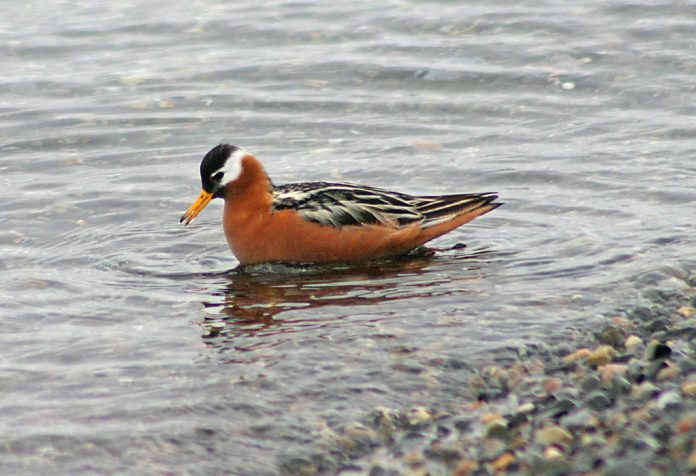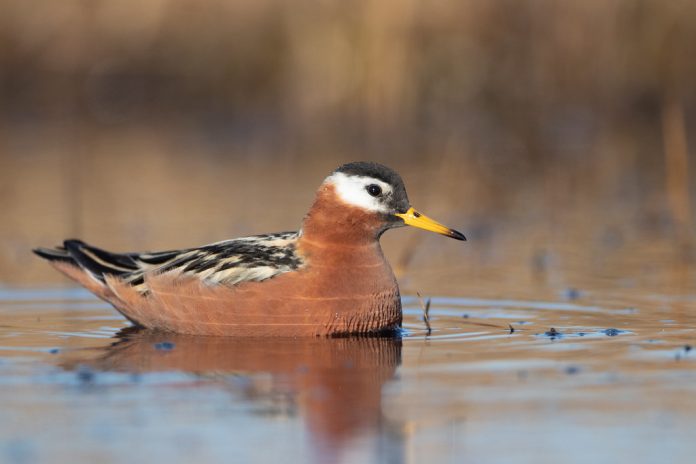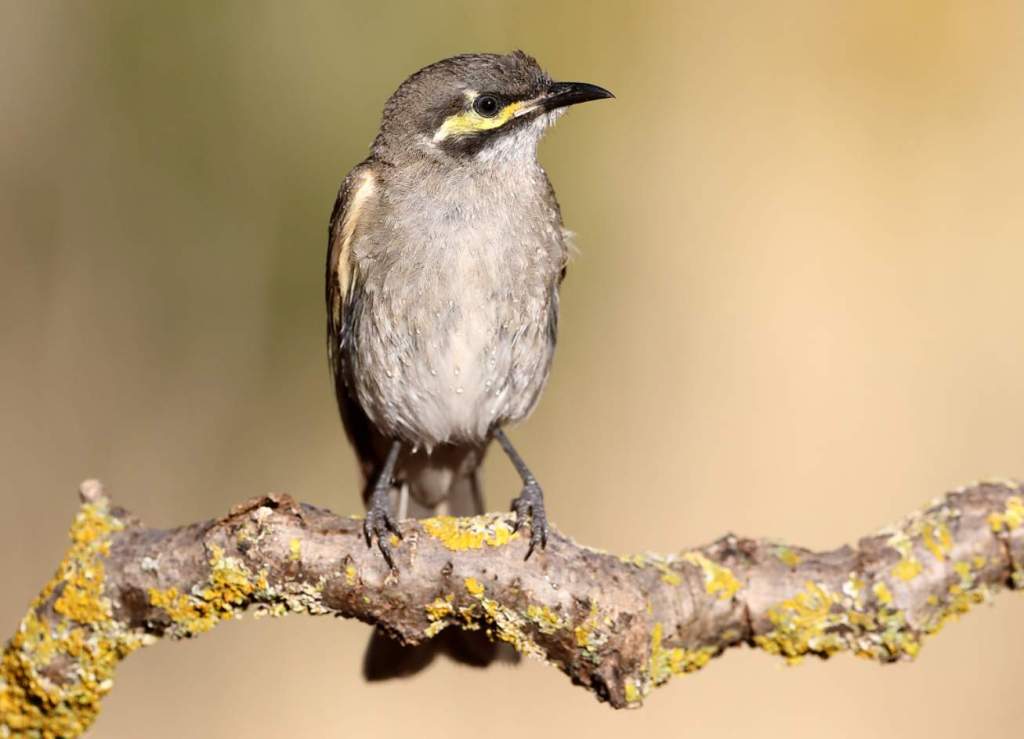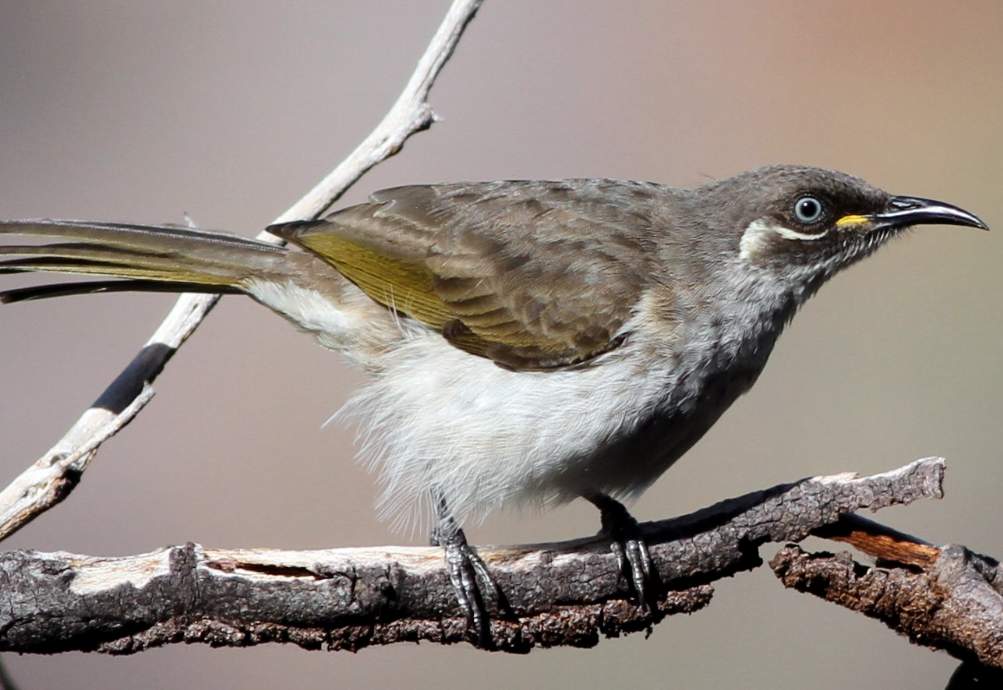Identification
Red phalarope (Phalaropus fulicaria) is seen primarily along the Atlantic seaboard. This is a rather larger, chunkier, and moderately larger-headed bird than the red-necked, with a distinctly thicker and more angular bill at all seasons. The summer plumage is highly characteristic, with full underparts chestnut-red and contrasting with a white face. Moreover, the winter birds are very similar in plumage to those of the red-necked and are best identified by the thicker, blunt-tipped bill.
The autumn birds with widespread gray on the mantle and scapulars, contrasting with dark-centered wing coverts and tertials, are immature red. In-flight, summer-plumaged birds show prominent contrast between white underwing and chestnut underbody (showing merely dark below in poor light); they are distinguished from summer red knot by their dark rump and clear white wing bar.
Also, the winter birds in flight are separable in complexity from red-necked birds by their relatively chunkier build (with the shorter, thicker bill), longer wings, and less rapid, twisting flight; birds with an obvious clean grey saddle and dark leading edge to the inner wing would be red.

Red Phalaropus fulicaria is difficult to separate from winter sanderling if the head pattern is not visible until the bird settles on the surface of the water and gives the game away. Red phalarope flight action is rapid and fluttering, invariably hugging the surface of the sea.
This is usually encountered in flocks at sea, swimming buoyantly, and picking at floating weed. A rare inland, although subject to the occasional ‘wrecks’ that force large numbers towards the European coasts following the harsh autumn gales, that is equally tame as Red-necked when discovered ashore. This is also known as gray phalarope.
Sex/Age
The red phalarope female is larger and, in summer, plumage is more brightly colored than the male (which has cinnamon speckling on dark areas of the head and a more extensive dark tip to the bill). The first-summer birds probably do not attain summer plumage; they are suspected to remain in winter quarters.

The usual call is a short, explosive ‘pikk’, less chirped than the call of Red-necked. It gives twittering or chirruping calls on breeding grounds, including a rolling ‘prrrrt’.
Habitat
This is not uncommon Spitsbergen, but a rare and localized breeder elsewhere in the European region. It breeds by pools in coastal tundra, only rarely recorded on spring migration. Sometimes common offshore in the Atlantic on autumn passage to pelagic winter quarters off Western and Southern Africa (when breeders of our region may be joined by birds from Greenland and eastern North America); regular in very small numbers along western coasts after strong winds exceptional inland.
Size
The Red phalarope size is about 20–22 cm in length and the wingspan is 40–44 cm.







